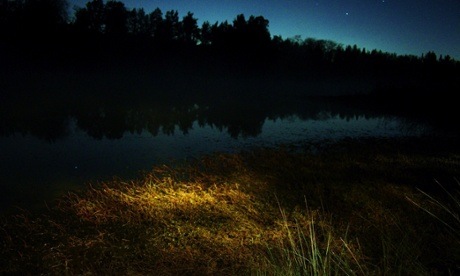
Yarramundi, on the western outskirts of Sydney, is a great place to bury a body.
Acres of dense vegetation and few main roads keep out passersby. Vast distances between properties disguise unpleasant stenches. Searing heat in the summer gives way to heavy rain in winter, all the better for a body to decompose.
Forensic scientists have noticed, and chosen a 48-hectare plot in the area as the site of the southern hemisphere’s first “body farm” – an outdoor lab where researchers can study the way a human body decays.
Approval to plant bodies on the property was granted last April, and now construction of a laboratory and fencing is due to begin within three months.
“There’s a gap in our understanding of the decomposition process in Australia,” said Professor Shari Forbes, a chemist and professor of forensic medicine at the University of Technology, Sydney, who will run the facility.
Most body farms (official name: forensic taphonomy facilities) are in the US, in “extremely different and distinct” environments to those faced by Australian investigators, Forbes said.
A corpse in Australia contends with humidity, intense ultraviolet rays, peculiar soils and geology and a unique array of insects and animals. Forbes said research under these conditions would help police identify new processes to search for, recover, and identify victims’ remains.
“What’s most relevant at the moment is disaster victims, how we can recover DNA to better identify victims,” she said.
Two or three bodies will be placed at the site at any one time, for up to one year, in various positions and locations.
“Sometimes they’ll be just under the soil, mimicking someone who was buried in a shallow grave; or they might just be placed on the surface, because we do sometimes recover missing persons who might have been hiking and become lost and perish,” she said.

The bodies will be sourced from the existing body donation program that provides cadavers for UTS medical research. Donors have lined up to take part in the program since the body farm was approved last April. “We’ve been pleasantly surprised by the response we’ve received. There’s a lot dedicated individuals out there.”
After their service to science, the donors’ bodies are returned to UTS, where their final wishes – burial, cremation or otherwise – are carried out.
High fences and security will surround the facility, which will be away from the main road. But that hasn’t stopped some local residents raising objections.
One neighbouring couple likened the facility to “living next door to a cemetery, only worse – the remains are exposed”. Another raised the prospect of human remains being dug up by wildlife and potentially brought on to neighbouring properties.
Still others questioned what might happen in the summer when the temperature creeps close to 40 degrees: “As residents, what smell if any should we expect?”
But Forbes said a full environmental impact assessment had been conducted and the project had been given the all clear: “It actually won’t have a negative impact on the environment, and certainly there won’t be any odour or anything.”
As for the term body farm? It comes from the title of a 1994 novel by the crime writer Patricia Cornwell, set at a similar facility in Tennessee. “We try not to use it,” Forbes said. “From our perspective, it’s somewhat disrespectful to the donors and their valuable contribution.”
